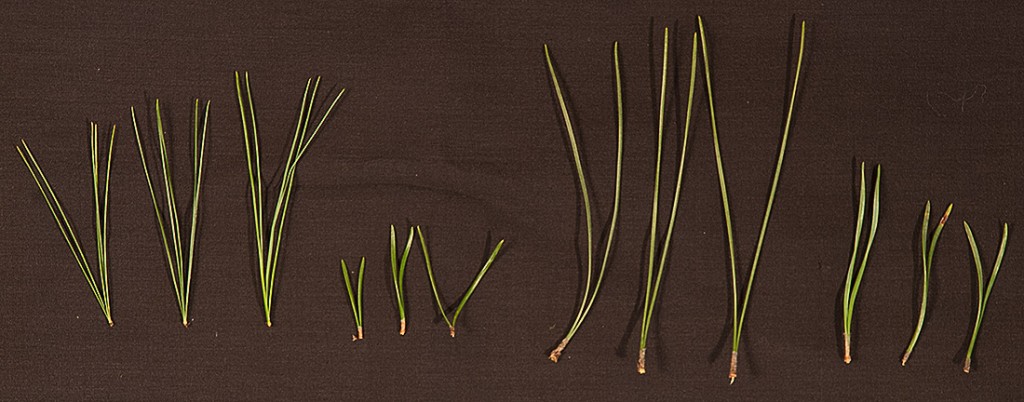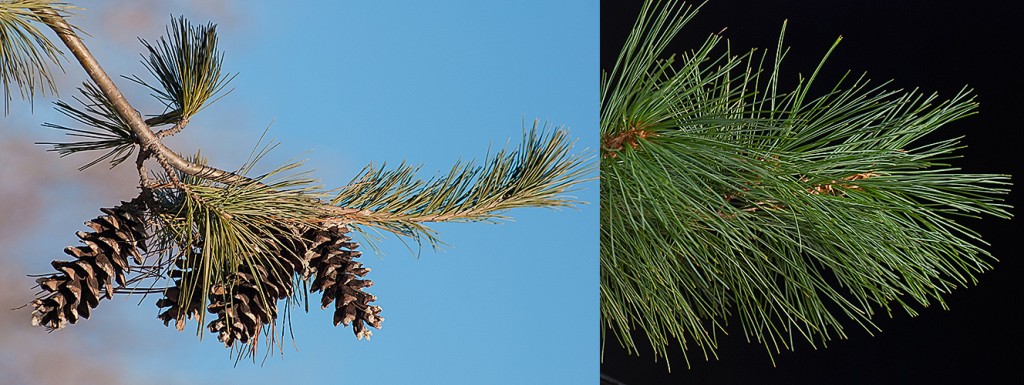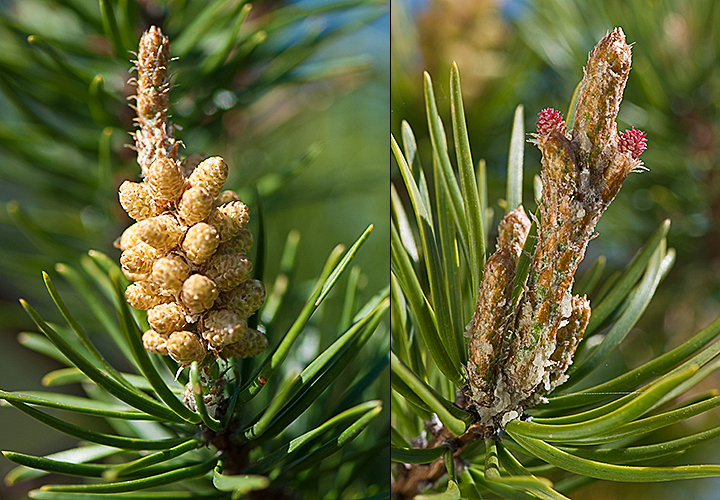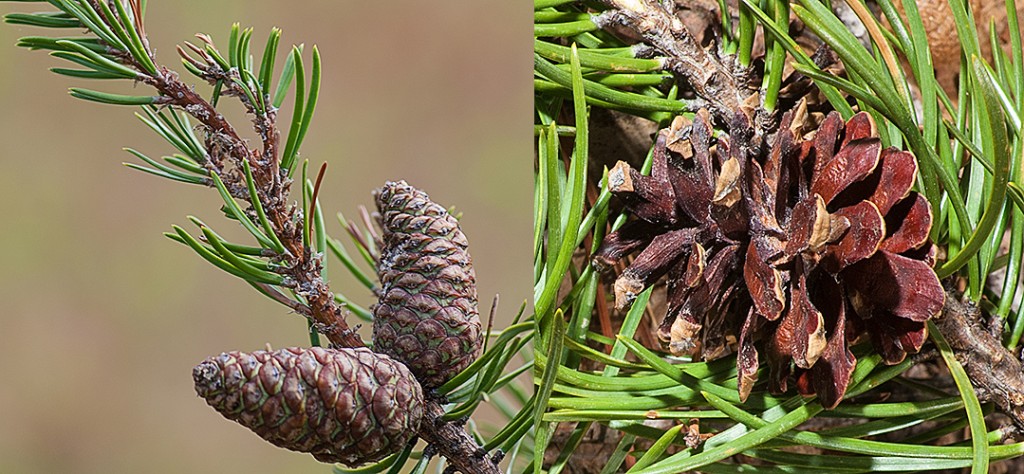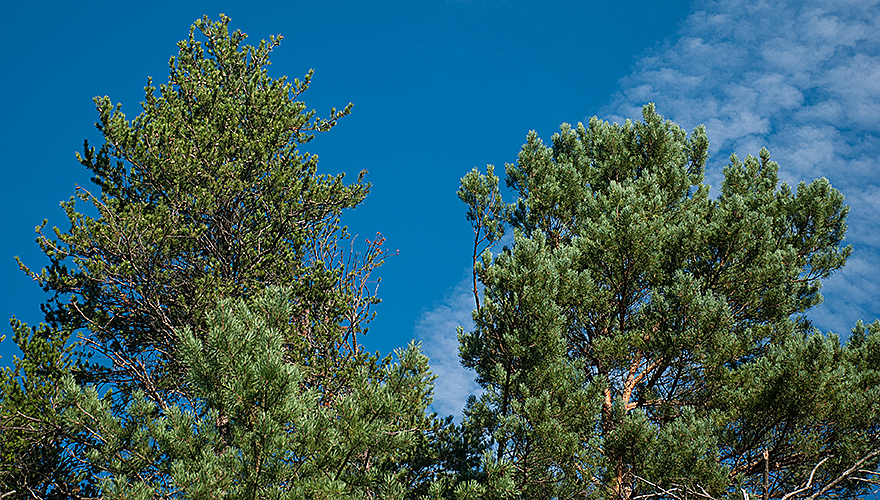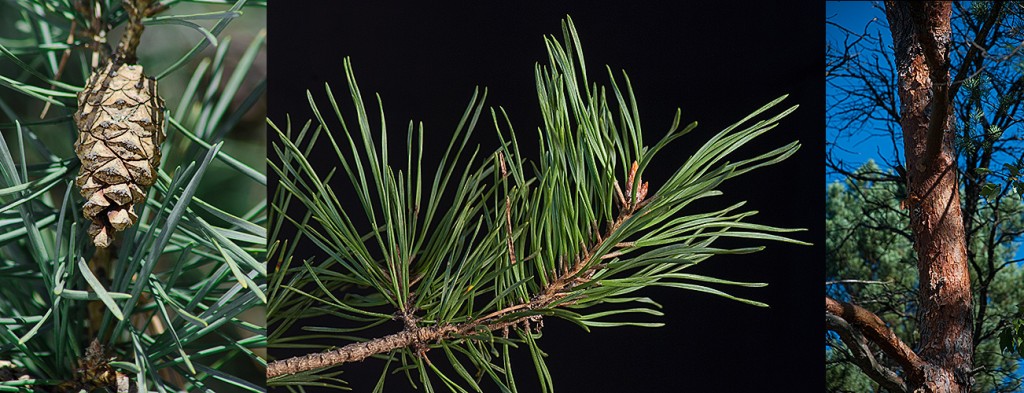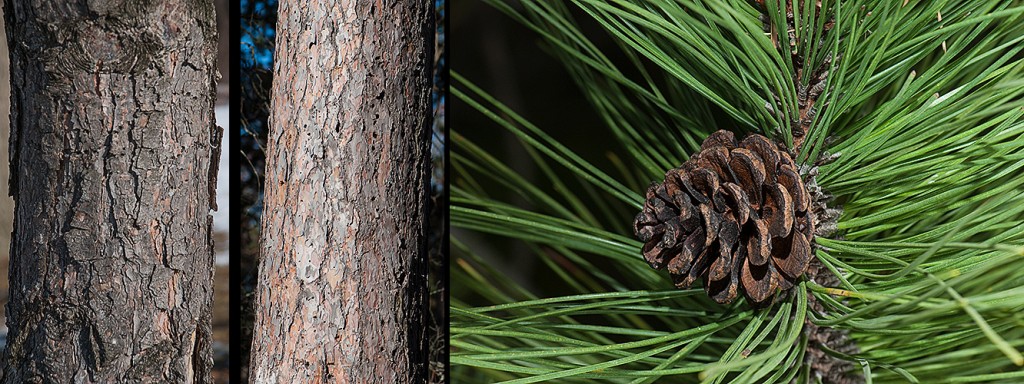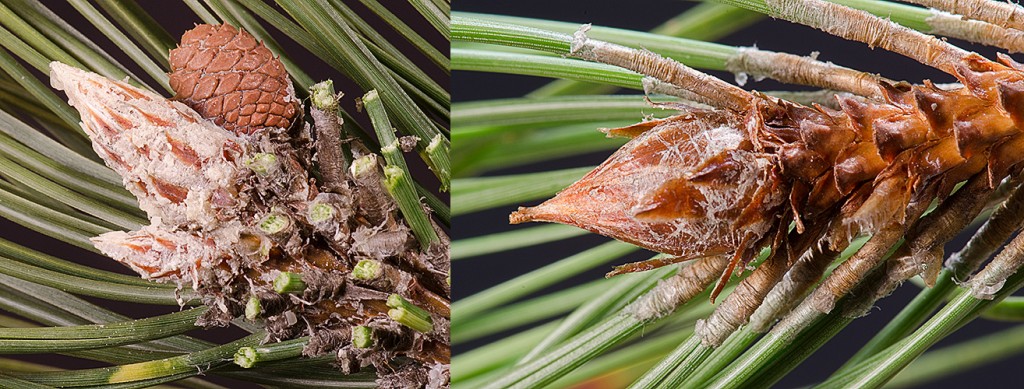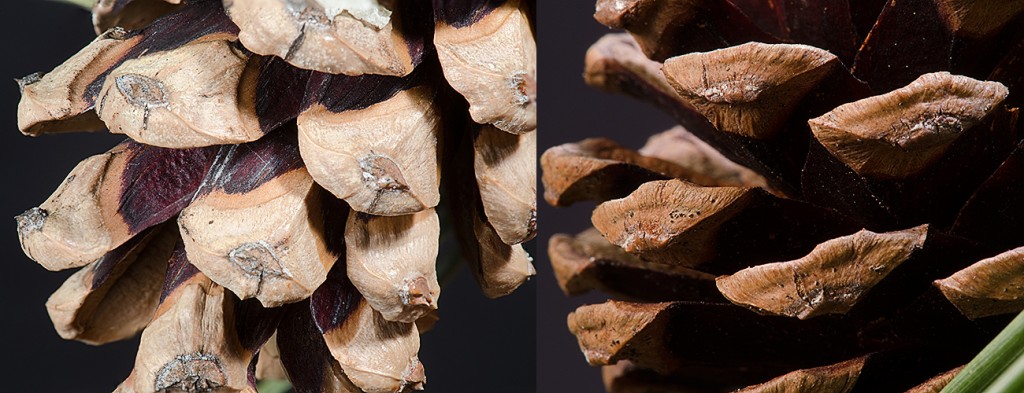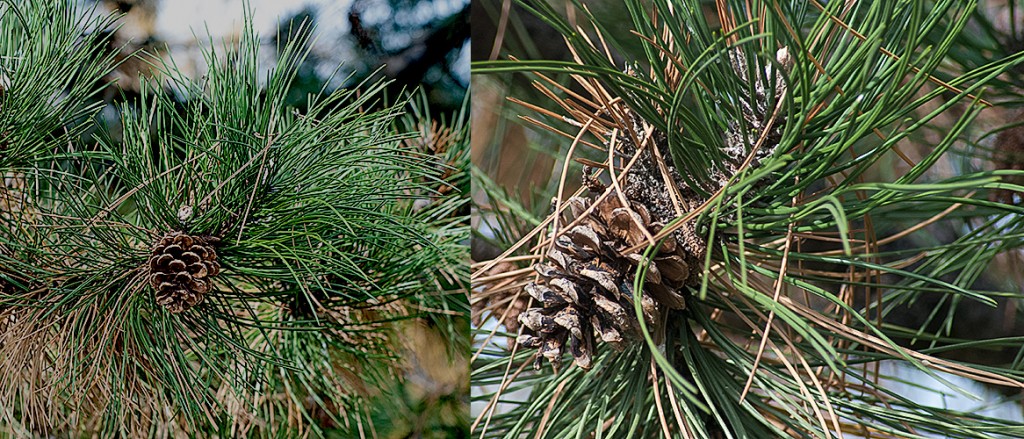Michigan has three native species of Pine trees and two widely established non-native species. Two additional species have been recorded in the Michigan Flora database but currently they rarely escape. They are Pitch Pine (Pinus rigida) and Ponderosa Pine (P. ponderosa). Both of these species have needles in groups of three.
White Pine (P. strobus) is native and easy to recognize with its needles in groups of five. They are fine, soft needles. Its cones are three times as long as they are wide. This is the state tree of Michigan. This was the preferred pine species during Michigan’s lumber era, because it occurred in pure stands and floated well.
Jack Pine (P. banksiana) is native occurring mostly north of Saginaw but coming south along the Lake Michigan coast to the state line. It has two, 2-4 cm (3/4” to 1 1/2”) long needles in each cluster. They are normally twisted. Its bark is dark red to dark gray and at times looks as if it is covered by burnt corn flakes. Bent cones are another distinguishing character of this tree. It is often stated that fire is required to open the cones but I commonly see open cones hanging on trees.
It is among young Jack Pines that Kirtland’s Warblers nest. This is a short-lived species; a sixty year old Jack Pine is ancient whereas a sixty year old Red or White Pine is still a teenager. Jack Pine is normally a small tree, reaching 15 m (50 feet) in height. I watched one Jack Pine for a decade that crept along the ground, never reaching more than 1 m (3 feet) in height but becoming 5 m (16 feet) long before it died.
Scots Pine or Scotch Pine (P. sylvestris) is a Eurasian species that has been planted extensively in Michigan. Mature trees have a distinct reddish-orange bark in the upper tree trunk. The needles are similar to Jack Pines making immature trees difficult to separate. I hit my palm against the end of the needles and if they feel sharp then it is a Scots Pines. The needles are sometimes glaucous (with a waxy bloom) and tend to be slightly longer than Jack Pine needles. Cones on Scots Pines are straight and open in the second year.
Red Pine (P. resinosa) is a native growing mostly north of Flint. It has two, 10-15 cm (4” to 6”) long needles in each cluster. When bent the needles break. This species has reddish-brown winter buds. Its common name comes from the flaky, reddish upper bark. Stumps, 110 years old, dot the field at our cabin near Grayling. Red Pines normally occur in mixed stands with Oaks (Quercus sp), Cherries (Prunius sp) or White Pine. They were lumbered later than the pure stands of White Pine.
Black Pine or Austrian Pine (P. nigra) is an European species that is widely planted in the Great Lakes Region. The needles are similar to Red Pine but they are flexible. This species has black bark and appears denser having more needle clusters and branches than a Red Pine. Its winter buds are whitish and sticky. Black Pine cones have prickles on their umbos and Red Pines have flattened umbos. An umbo is the shield-like structure on a pine cone’s scale. Black Pine cones are yellowish-green before they open.
Copyright 2014 by Donald Drife
Webpage Michigan Nature Guy
Follow MichiganNatureGuy on Facebook

